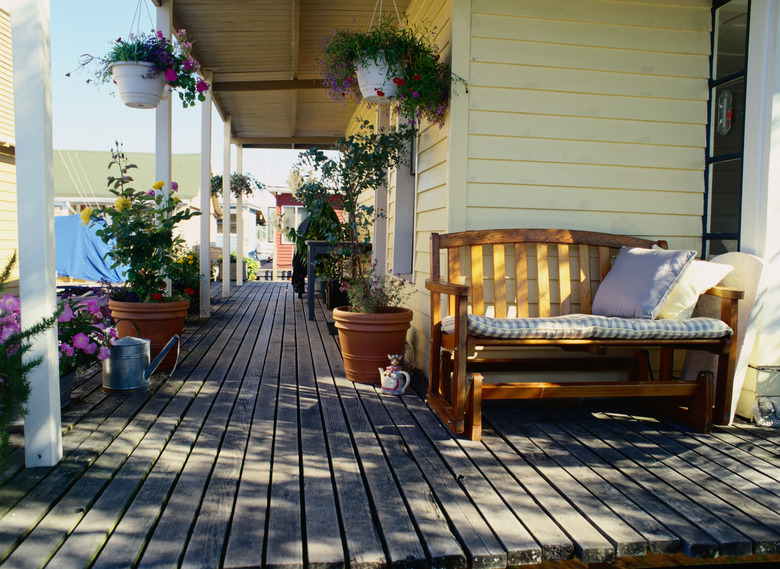How To Install Fireplaces On Wooden Decks
Things Needed
-
Outdoor fireplace, chiminea or fire pit
-
Stone or concrete tiles or fire-resistant pad
-
Tubing and connectors for gas line, if required
-
Firewood rack, if required
Many homeowners enjoy their decks, often thinking of them as outdoor extensions of inside rooms. Adding a fireplace to a deck can enhance this perception, increase the use of a deck in cooler weather and provide an alternative place to cook for nature lovers. With appropriate planning and attention to detail, homeowners can easily install outdoor fireplaces on their wooden decks.
Step 1
Determine if local codes and ordinances permit outdoor fireplaces. Some communities forbid them because of air pollution concerns. Others specify the fuel to be used in the fireplaces. Obtain all necessary permits before installing your fireplace.
Step 2
Decide on what type of fireplace you want. Traditional fireplaces and chimineas—pottery or cast iron fireplaces from Mexico—direct heat mostly toward the front, and their chimneys carry smoke up and away from the deck. Fire pits radiate heat in all directions, but their low profile means smoke remains low as well. Choose a stone fireplace only if installing it while building the deck or placing it beside the deck. The cement footing required for a stone fireplace should be dug into the ground, and its weight would damage a pre-existing deck.
Step 3
Select the correct location for the fireplace. Consider wind patterns, available sun and shade throughout the year and distance from house. Locate the fireplace on an outside corner of your deck. This will provide sufficient space for its chimney to draft properly. Avoid placing it near trees and shrubs, to prevent fires from blowing embers.
Step 4
Protect the deck from embers or falling logs. Place tiles or a patio block under and out 3 to 4 feet on all sides of fireplace. If using a chiminea or fire pit, set it on a pad. Other protective options include hearth pads, grill pads and fireplace screens. Your protection product has to withstand continuous heat. Always be alert to stray embers while using the fireplace and never leave it unsupervised.
Step 5
If using natural gas for fuel in your fireplace, connect the gas line according to manufacturer's instructions. Ensure that all supply lines remain protected from tampering or accidental breaks.
Step 6
If you're burning wood, store the wood away from the fireplace and protected from the weather. Put it in a shed or garage, for example. Store wood on a rack to reduce dampness and discourage insects and other pests. Use a carrier to transport logs to the fireplace, taking only enough for one fire at a time. Remove unused logs from area near the fireplace to prevent fires from stray embers.
Warning
Always keep a fire extinguisher near your fireplace. Avoid using an outdoor fireplace on windy days. Always extinguish the fire completely before leaving the deck or going into the house.
References
- "Year-Round Outdoor Building Projects;" Richard Demske; 1977
